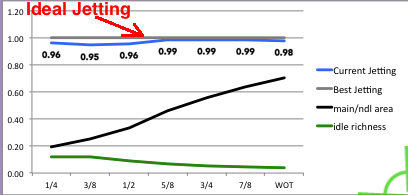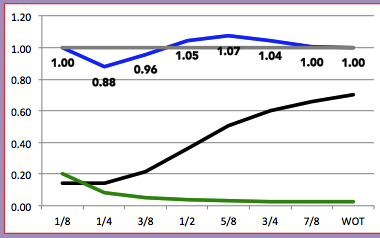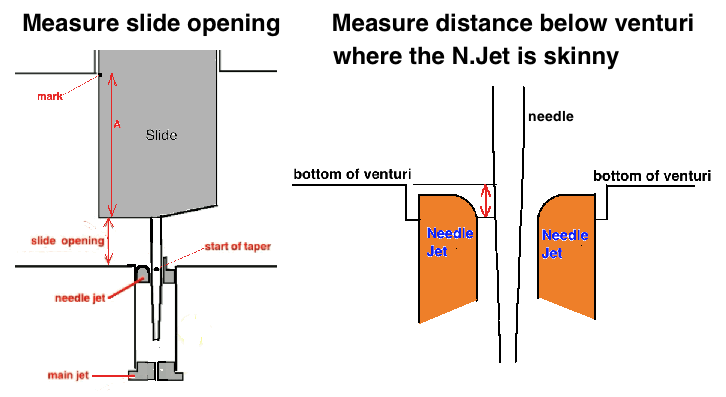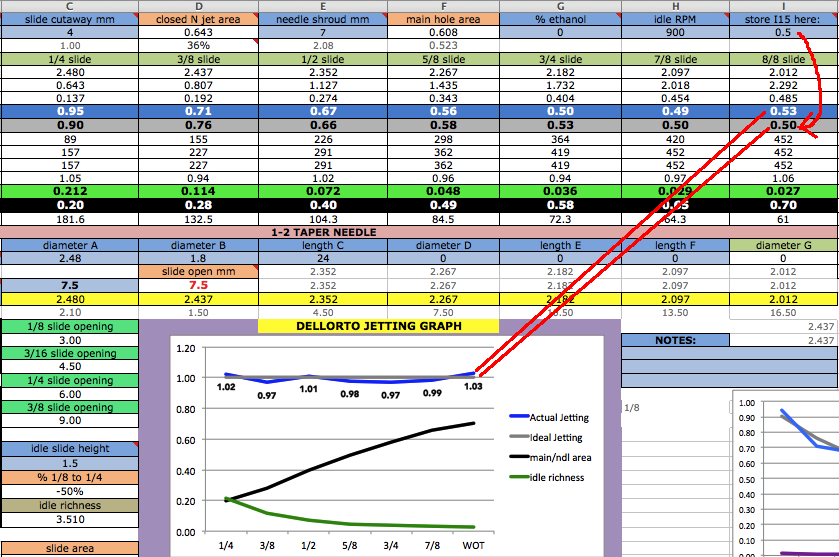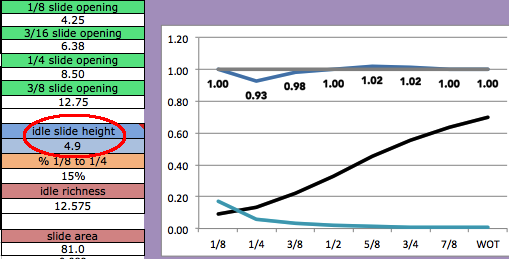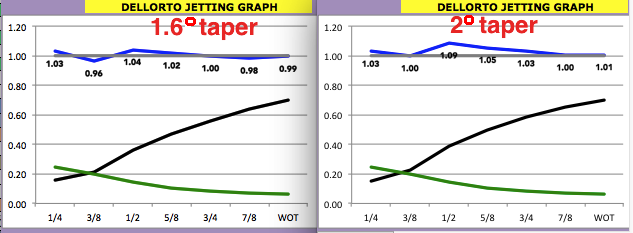Jetting Old Carburetors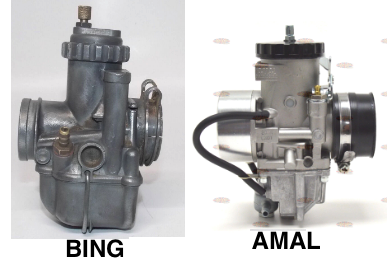 Below is a screenshot of my spreadsheet for jetting old carbs. Here's how to use the spreadsheet: Enter data into all the light blue cells of the spreadsheet. If you hover the mouse pointer over a cell with a red corner then a message will pop up telling you about that cell. 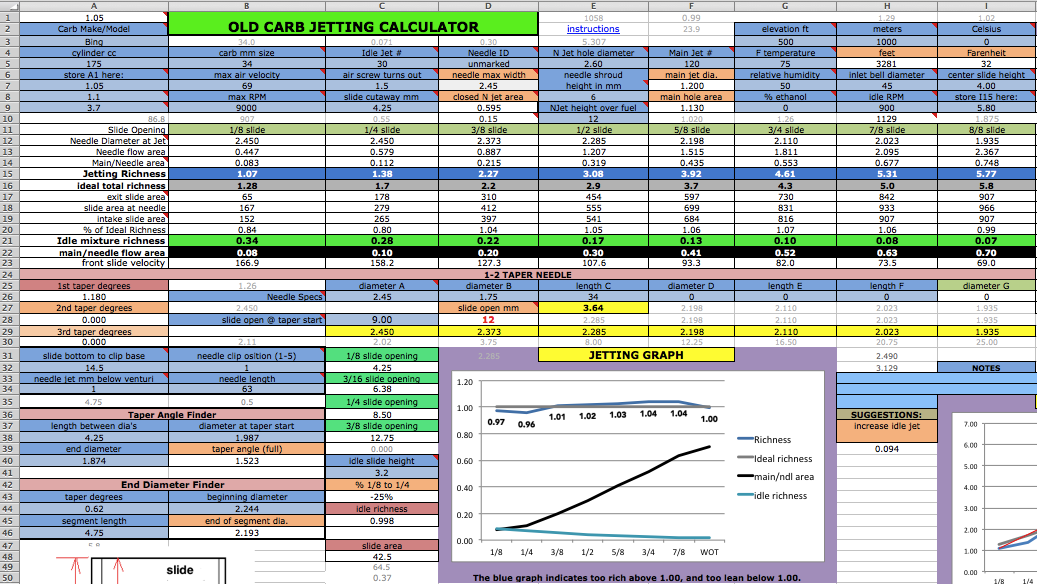 Here's the sequence to follow: 0) First make sure your real life idle jet size is correct. Turn in the slide stop screw till you have a slightly fast idle. Then slowly turn the air screw till you find where it idles the fastest, then readjust the slide stop for the same fast idle as before if it has changed. Then slowly turn clockwise the air screw till the idle speed starts to drop off due to starting to be too rich (but which is good for starting w/o the choke in warm weather). This should result to be within 1 to 2 turns out. If it is less than 1 turn then you need a bigger idle jet. If it is more than 2 turns then you need a smaller idle jet. Install correct idle jet if necessary and repeat procedure. Then turn the slide stop screw till you have a normal idle speed. The idle jet that gives the best starting and idling is the right one for use with this program and you can change it back later. Normally if you have to make the idle mixture too rich for idling in order to help compensate for weak throttle response as you crack the throttle open then you either have the needle clip in too high a position or you need a skinnier needle or fatter needle jet (the brass hole the needle slides into). 1) Make sure your main jet is correct. Click here to find out the best way to size the main jet. For small carbs you may need to lower the needle shroud if one main jet size is too rich and the next smaller size is too lean. In that case put in the rich jet and then lower the shroud .5mm (.02") at a time till the jetting is right. [Plug Reading] 2) Determining mid throttle needle-dependent jetting - Mark your throttle body and throttle grip so you can see where 1/2 throttle open is. Ride at a steady speed on a flat road, or on an inclined road if the bike wants to accelerate much at those settings. Then listen to the exhaust note. If it is irregular and/or sputters occassionally then the needle is too rich at that setting. If it runs fine but drops power when you quickly open the throttle then it is too lean there. Something between those two extremes is desirable. You need this info to be able to entr a jetting richness/leanness # at A8. To lean out the mid throttle jetting a bit you can lower the needle by repositioning the clip higher, or do the opposite to richen the mid throttle jetting. But be aware that the needle position also affects the transition of power off idle. If you have to lower it so much that it causes too much of a weak zone off idle then you should just buy a needle with less taper angle.
3) Go to the last sheet (click on the velocity tab at the bottom left of the screen) to find out the maximum air velocity to enter at B7. If you aren't sure of the transfers duration then enter 125-130 for race engines or 115-120 for street/trail engines. It is best to measure the idle slide height but for "close" results you can just use the calculated value. 3) Go to the last sheet (click on the velocity tab at the bottom left of the screen) to find out the maximum air velocity to enter at B7. If you aren't sure of the transfers duration then enter 125-130 for race engines or 115-120 for street/trail engines. 
You'll need to set the slide stop screw for an even engine idle and then take the carb off and measure the idle slide height for C41 of the Dellorto sheet. The calculated value of 11% of the carb bore is at C14 of the Air Velocity sheet which is acceptable with reed valves. If you absolutely don't want to take the carb off to measure the slide opening then use this value.  4) At C26 to G26 enter the data for your needle (obtained by measuring the needle with a digital caliper) and the program calculates the needle diameter for every 1/8th distance of the carb bore. If it is a single tapered needle then the dimensions are just A, B, and C. 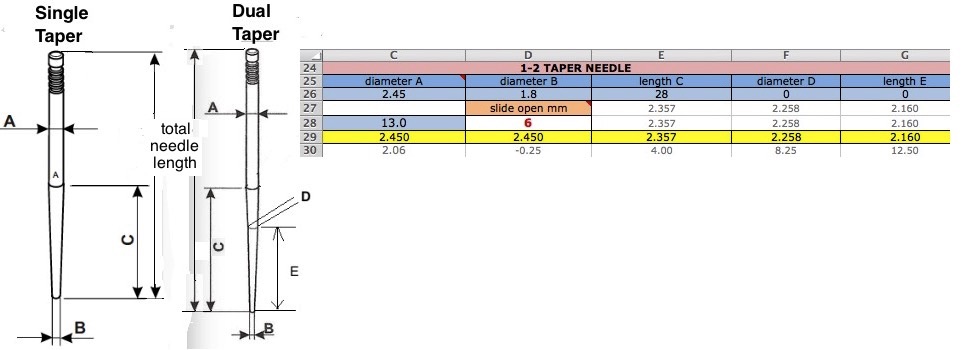 5) If you aren't sure of the needle jet (atomizer) hole diameter then you may have to measure the hole size. 
 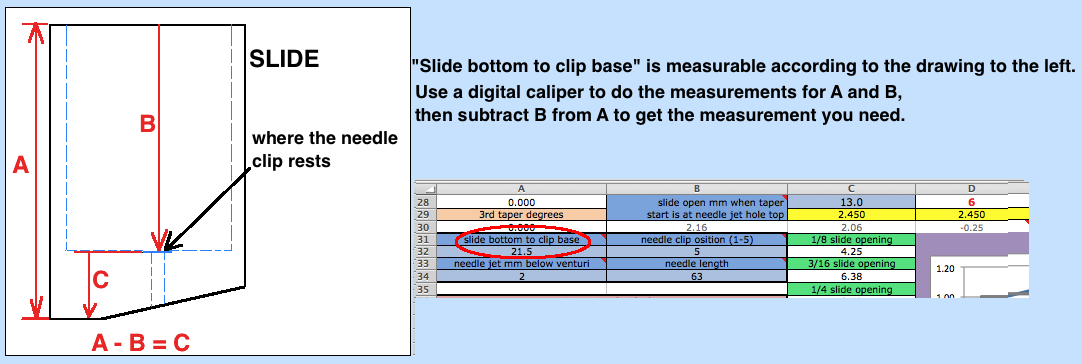
9) Now you can set the 5/8 slide position ideal graph value according to your own evaluation of mid throttle jetting. This completes the skeleton of the ideal graph which the program will fill in the remaining points for a complete graph for your jetting to be compared to. Hover your mouse pointer over A8 to read the lengthy comment stored there. It basically says that you need to enter 1.0 if the jetting there is perfect, or a higher # if jetting there is too rich, or less if the jetting there is too lean. Then enter the # at E28 at A9 which will set the gray graph mid point that all future changes will be compared to. After setting the three main points on the grey graph you need to leave them alone. All virtual changes will be to try to get the blue graph to be equal to the gray graph. To be the most precise in this step it iis best to remove the carb and open the throttle till the slide is 5/8 (62%) open and then mark the throttle and throttle body. (You can use White-Out) 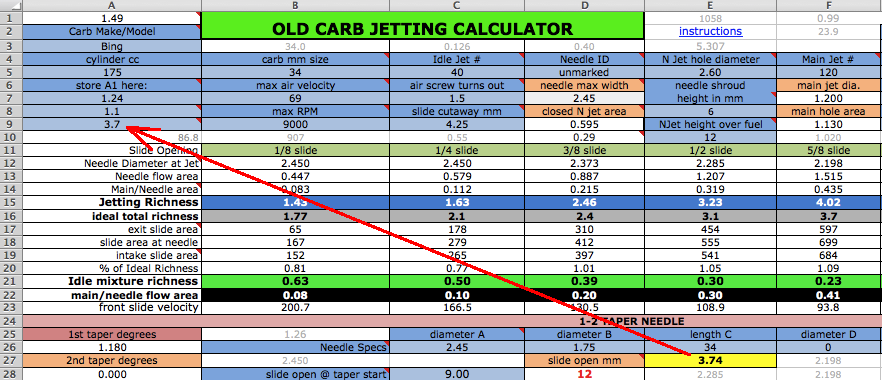

12) Re-record this spreadsheet with all of your data in it. For example, if saving data for a CZ250 then save it as JettingCalcCZ250.xlsm 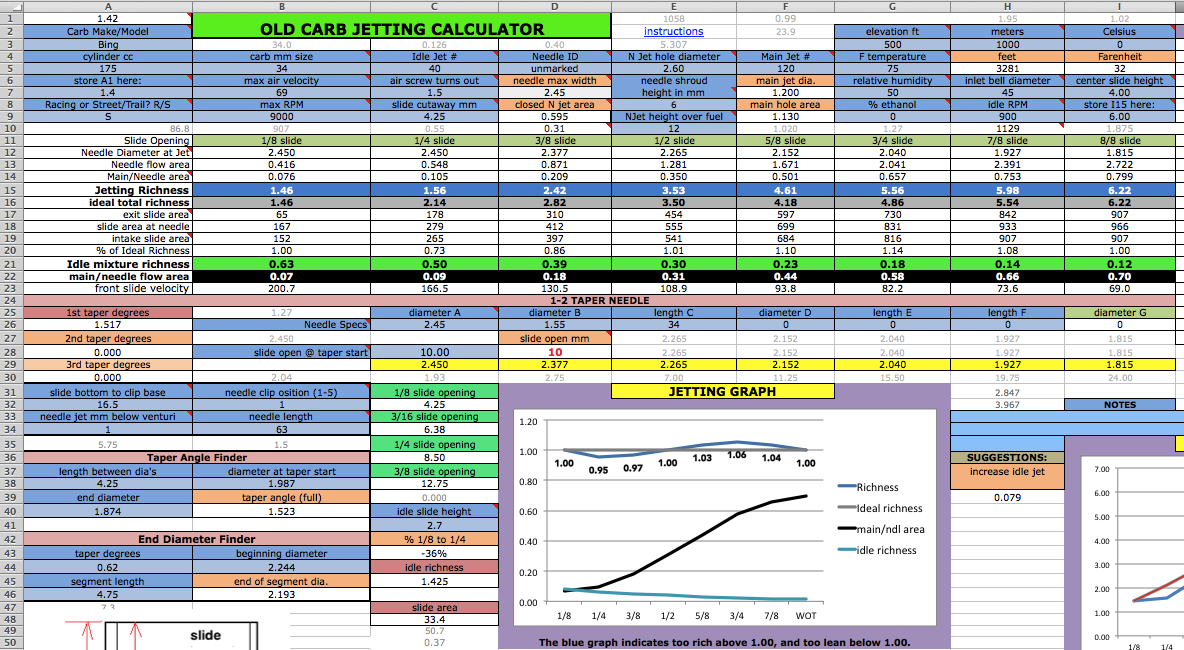 If you have any questions then just email me at a57ngel@yahoo.com |
